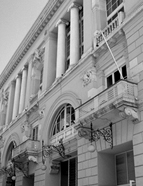

................................
The SGL has made a recognised effort in the publication of maps and charts, monographic works, and periodicals. Its printed materials are valued both as bibliographic specimens and as tools for researchers. The Society has published maps and charts documenting Portuguese presence worldwide, either through exploratory voyages or scientific and technical missions. Among its periodicals, three titles stand out: the Boletim (published from 1876), Geographica (1965–1973), and Comunidades Portuguesas (1966–1974). The latter was published quarterly across 36 issues under the auspices of the União das Comunidades da Cultura Portuguesa , established during two congresses on Portuguese communities organised by the SGL in the 1960s. Geographica: Revista da Sociedade de Geografia de Lisboa , published in 37 issues, represented an effort to project the SGL through the output of its Vasco da Gama Study Centre (created by the Junta de Investigações Ultramarinas in 1965 to function within the SGL). This journal focused on scientific publications in Geography, selecting more academic articles. Both periodicals demonstrated the SGL's effort to refocus its scientific mission on geographic studies and to reorient research towards the Portuguese diaspora during a period marked by reduced official financial support and ongoing armed struggles for independence in Portugal's colonies. The most enduring and representative of the institution's publications is the Boletim da Sociedade de Geografia de Lisboa , continuously published since 1876. The first series (1876–1878) consisted of only four issues over three years (instead of the usual twelve per year), reflecting the challenges the SGL faced in printing and publishing. Lacking official support initially, the publication relied on private donations and the intellectual, organisational, and financial determination of its members. Many studies published in the Boletim as standalone articles formed the basis for the SGL’s monographic publications, including those with a historical focus.
This work is financed by national funds through FCT - Foundation for Science and Technology, I.P, in the scope of the projects UIDB/04311/2020 and UIDP/04311/2020.
